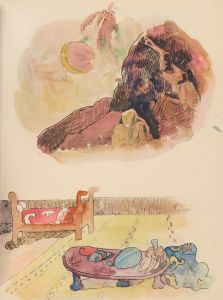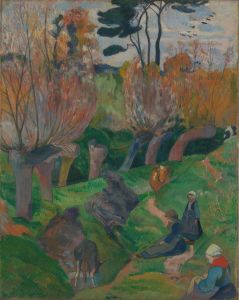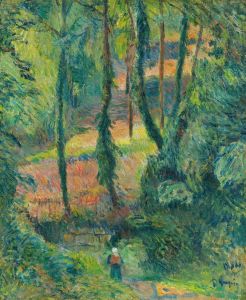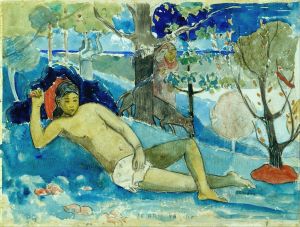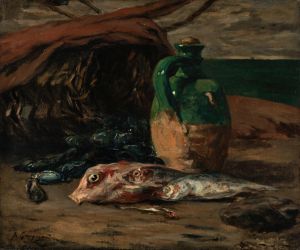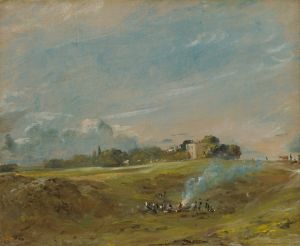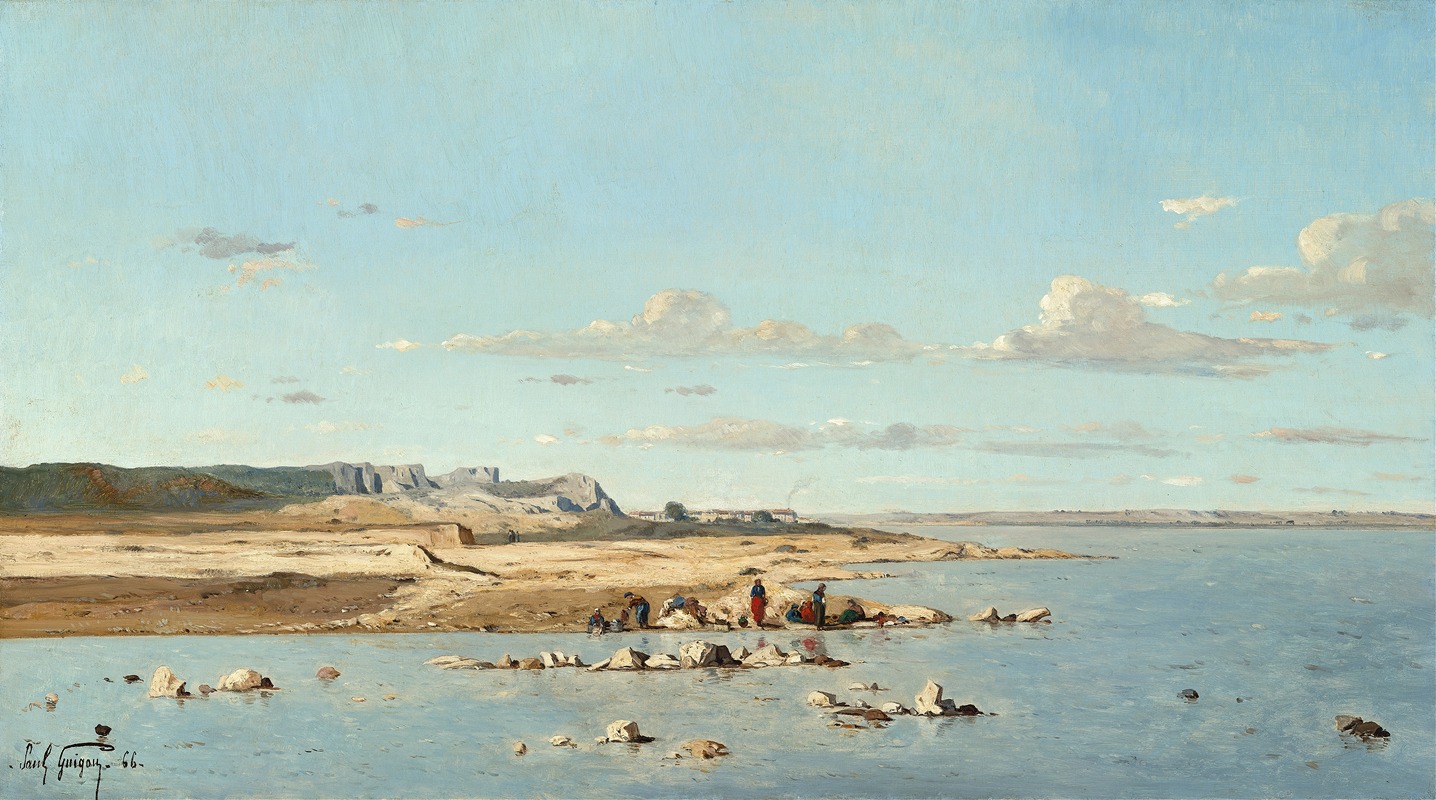
Washerwomen on the Banks of the Durance
A hand-painted replica of Paul Gauguin’s masterpiece Washerwomen on the Banks of the Durance, meticulously crafted by professional artists to capture the true essence of the original. Each piece is created with museum-quality canvas and rare mineral pigments, carefully painted by experienced artists with delicate brushstrokes and rich, layered colors to perfectly recreate the texture of the original artwork. Unlike machine-printed reproductions, this hand-painted version brings the painting to life, infused with the artist’s emotions and skill in every stroke. Whether for personal collection or home decoration, it instantly elevates the artistic atmosphere of any space.
"Washerwomen on the Banks of the Durance" is a painting by the renowned French Post-Impressionist artist Paul Gauguin. Created in 1888, this work is a notable example of Gauguin's early style before he fully developed the more symbolic and synthetist approach that he is widely known for.
The painting depicts a group of women engaged in the activity of washing clothes along the banks of the Durance River, which is located in the Provence region of southern France. The scene is set against the backdrop of the river and the surrounding landscape, capturing a moment of everyday rural life. Gauguin's use of color and brushwork in this painting reflects the influence of Impressionism, yet also hints at his departure towards a more bold and expressive use of color that would characterize his later works.
Gauguin's choice of subject matter in "Washerwomen on the Banks of the Durance" aligns with his interest in depicting scenes of ordinary people and their daily activities, a theme that recurs throughout his oeuvre. The washerwomen are portrayed in a naturalistic manner, with attention to the details of their clothing and the physicality of their labor. The composition is balanced, with the figures arranged in a way that leads the viewer's eye across the canvas, from the foreground to the background.
The painting is also notable for its depiction of the natural environment. Gauguin captures the light and atmosphere of the Provence region with a palette that includes soft blues, greens, and earthy tones. The brushstrokes are loose and fluid, contributing to the overall sense of movement and activity within the scene.
"Washerwomen on the Banks of the Durance" is part of Gauguin's body of work from the period when he was living in Pont-Aven, Brittany, and later in Arles, where he worked closely with Vincent van Gogh. This period was crucial in Gauguin's artistic development, as he experimented with different techniques and sought to break away from the conventions of traditional European painting.
The painting is housed in the Musée d'Orsay in Paris, which holds an extensive collection of works by Gauguin and other artists of the late 19th century. It remains an important piece for understanding Gauguin's early development as an artist and his contributions to the Post-Impressionist movement.
In summary, "Washerwomen on the Banks of the Durance" by Paul Gauguin is a significant work that captures a moment of rural life with a blend of naturalism and emerging stylistic innovation. It reflects Gauguin's interest in everyday subjects and his evolving approach to color and composition, marking an important phase in his artistic journey.









